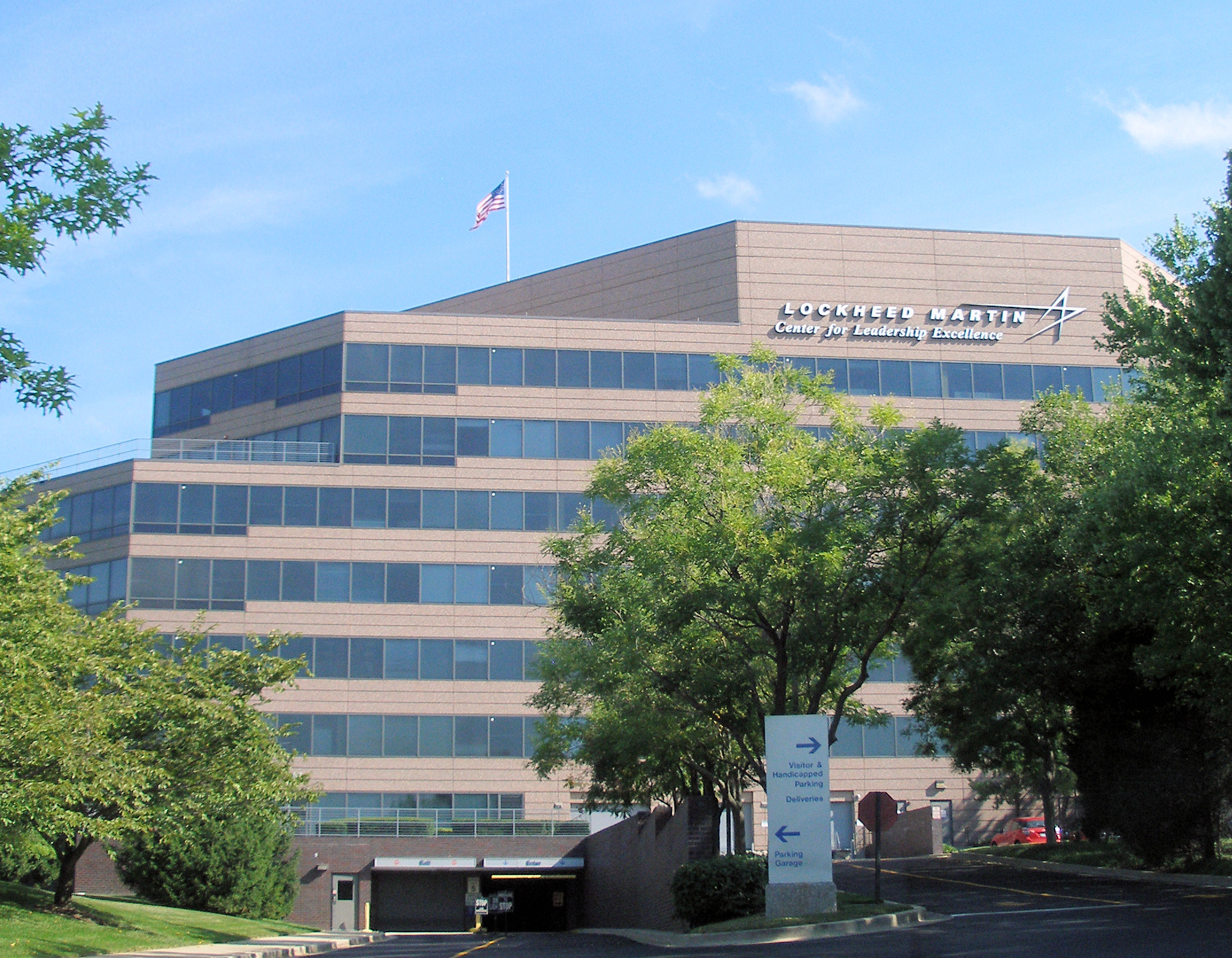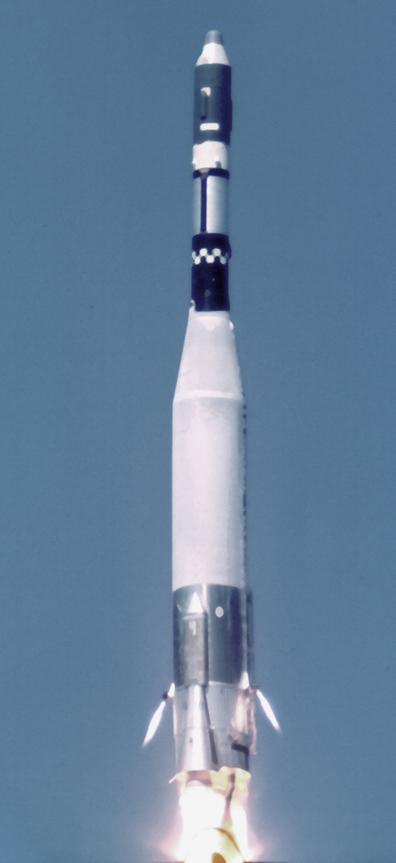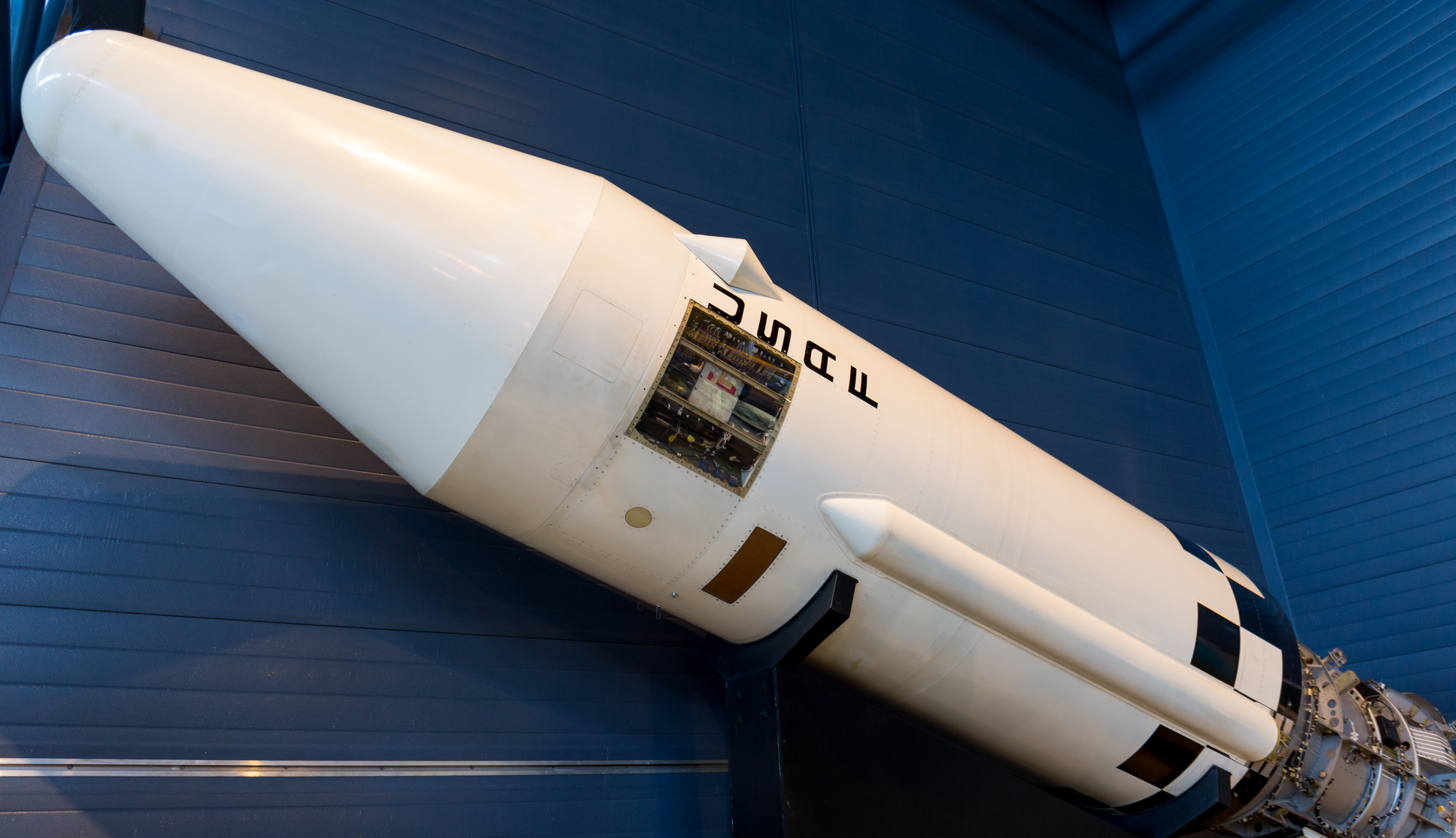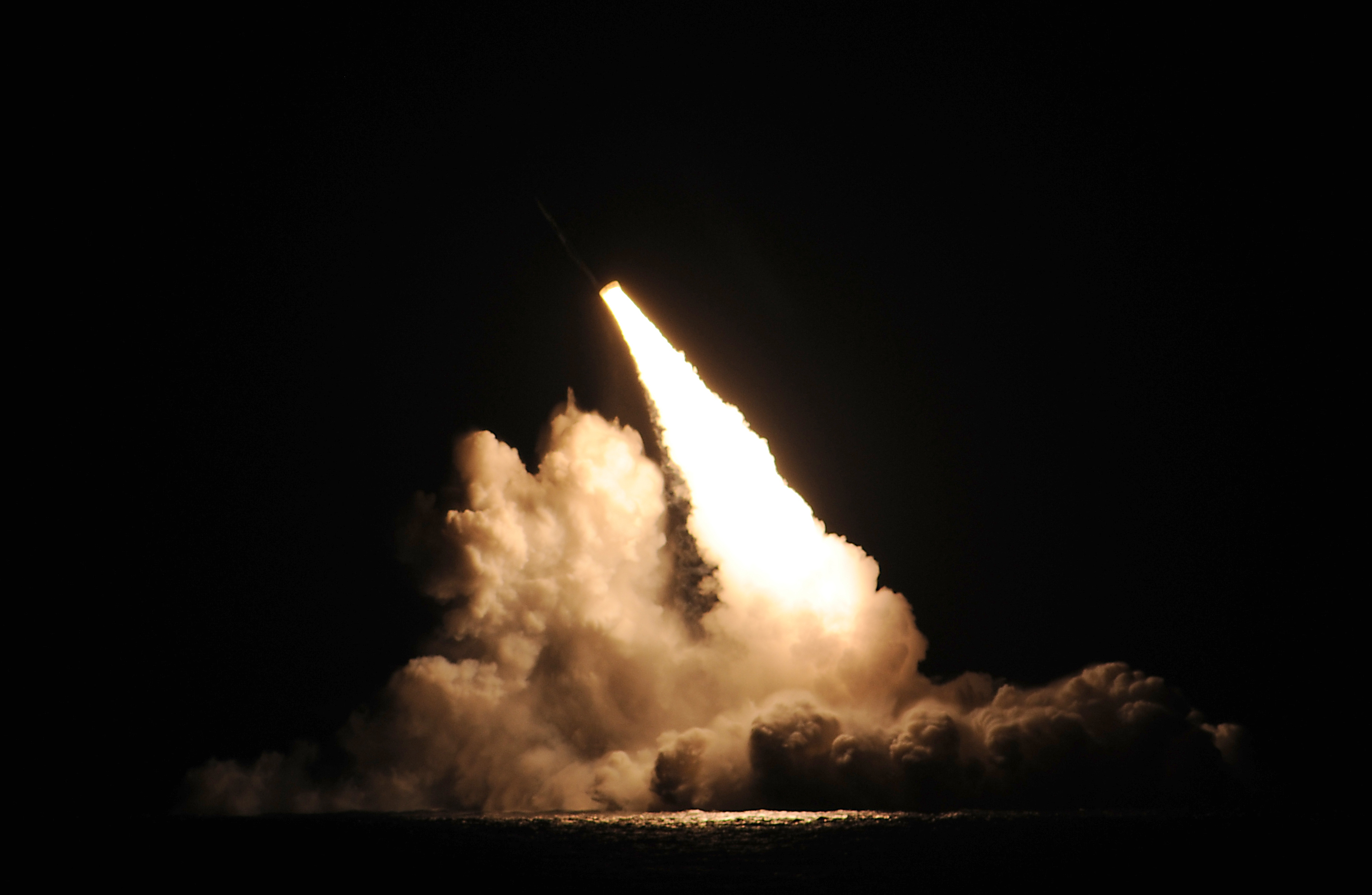|
Lockheed Martin Space
Lockheed Martin Space is one of the four major business divisions of Lockheed Martin. It has its headquarters in Littleton, Colorado, with additional sites in Valley Forge, Pennsylvania; Sunnyvale, California; Santa Cruz, California; Huntsville, Alabama; and elsewhere in the United States and United Kingdom. The division currently employs about 20,000 people, and its most notable products are commercial and military satellites, space probes, missile defense systems, NASA's Orion spacecraft, and the Space Shuttle external tank. History The Lockheed Missile Systems Division was established in Van Nuys, California, in late 1953 to consolidate work on the Lockheed X-17 and X-7. The X-17 was a three-stage solid-fuel research rocket designed to test the effects of high mach atmospheric reentry. The X-17 was also used as the booster for the Operation Argus series of three high-altitude nuclear tests conducted in the South Atlantic in 1958. The Lockheed X-7 (dubbed the "Flying Stove ... [...More Info...] [...Related Items...] OR: [Wikipedia] [Google] [Baidu] |
Lockheed Martin
The Lockheed Martin Corporation is an American Arms industry, defense and aerospace manufacturer with worldwide interests. It was formed by the merger of Lockheed Corporation with Martin Marietta on March 15, 1995. It is headquartered in North Bethesda, Maryland, United States. As of January 2022, Lockheed Martin employs approximately 121,000 employees worldwide, including about 60,000 engineers and scientists. Reports from 2024 estimate that Lockheed Martin Corporation (LMT) holds a market cap of around $139.7 billion. Lockheed Martin is one of the largest companies in the aerospace, military support, security, and technologies industry. It was the world's largest defense contractor by revenue for fiscal year 2014.POC Top 20 Defence Contractors of 2014 . Retrieved: July 2015 ... [...More Info...] [...Related Items...] OR: [Wikipedia] [Google] [Baidu] |
Palo Alto, California
Palo Alto ( ; Spanish language, Spanish for ) is a charter city in northwestern Santa Clara County, California, United States, in the San Francisco Bay Area, named after a Sequoia sempervirens, coastal redwood tree known as El Palo Alto. The city of Palo Alto was incorporated in 1894 by the American industrialist Leland Stanford and his wife, Jane Stanford, when they founded Stanford University in memory of their only child, Leland Stanford Jr. Palo Alto later expanded and now borders East Palo Alto, California, East Palo Alto, Mountain View, California, Mountain View, Los Altos, California, Los Altos, Los Altos Hills, California, Los Altos Hills, Stanford, California, Stanford, Portola Valley, California, Portola Valley, and Menlo Park, California, Menlo Park. As of the 2020 United States census, the population was 68,572. Palo Alto has one of the highest costs of living in the United States, and its residents are among the most educated in the country. However, it has ... [...More Info...] [...Related Items...] OR: [Wikipedia] [Google] [Baidu] |
Atlas (rocket Family)
Atlas is a family of US missiles and space launch vehicles that originated with the SM-65 Atlas. The Atlas intercontinental ballistic missile (ICBM) program was initiated in the late 1950s under the Convair Division of General Dynamics. Atlas was a liquid propellant rocket burning RP-1 kerosene fuel with liquid oxygen in three engines configured in an unusual "stage-and-a-half" or "parallel staging" design: two outboard booster engines were jettisoned along with supporting structures during ascent, while the center sustainer engine, propellant tanks and other structural elements remained connected through propellant depletion and engine shutdown. The Atlas name was originally proposed by Karel Bossart and his design team working at Convair on project MX-1593. Using the name of a Atlas (mythology), mighty Titan from Greek mythology reflected the missile's place as the biggest and most powerful at the time. It also reflected the parent company of Convair, the Atlas Corporation. The ... [...More Info...] [...Related Items...] OR: [Wikipedia] [Google] [Baidu] |
KH-8 Gambit 3
The KH-8 (Byeman Control System, BYEMAN codename Gambit-3) was a long-lived series of reconnaissance satellites of the "Key Hole" (KH) series used by the United States from July 1966 to April 1984, and also known as Low Altitude Surveillance Platform. The satellite ejected Corona (satellite)#Recovery, "film-bucket" canisters of photographic film that were retrieved as they descended through the Atmosphere of Earth, atmosphere by parachute. Ground resolution of the mature satellite system was better than . There were 54 launch attempts of the 3,000 kilogram satellites, all from Vandenberg Air Force Base, on variants of the Titan (rocket family)#Titan III, Titan III rocket. Three launches failed to achieve orbit. The first one was satellite #5 on April 26, 1967, which fell into the Pacific Ocean after the Titan second stage developed low thrust. The second was satellite #35 on May 20, 1972, which suffered an Agena pneumatic regulator failure and reentered the atmosphere. A few mont ... [...More Info...] [...Related Items...] OR: [Wikipedia] [Google] [Baidu] |
KH-9 Hexagon
KH-9 (Byeman Control System, BYEMAN codename HEXAGON), commonly known as Big Bird or KeyHole-9, p.32 Big Bird was a series of photographic reconnaissance satellites launched by the United States between 1971 and 1986. Of twenty launch attempts by the National Reconnaissance Office (NRO), all but one were successful. Photographic film aboard the KH-9 was stored on RCA Astro Electronic Division take up reel system then sent back to Earth in recoverable film return capsules for processing and interpretation. The highest ground resolution achieved by the main cameras of the satellite was , though another source says "images in the "better-than-one-foot" category" for the last "Gambit" missions. They are also officially known as the Broad Coverage Photo Reconnaissance satellites (Code 467), built by Lockheed Corporation for the NRO. The satellites were an important factor in determining Soviet Union, Soviet military capabilities and in the acquisition of accurate intelligence for ... [...More Info...] [...Related Items...] OR: [Wikipedia] [Google] [Baidu] |
KH-7 Gambit
BYEMAN codenamed GAMBIT, the KH-7 (Air Force Program 206) was a reconnaissance satellite used by the United States from July 1963 to June 1967. Like the older Corona (satellite), CORONA system, it acquired imagery intelligence by taking photographs and returning the undeveloped film to earth. It achieved a typical ground-resolution of to . Though most of the imagery from the KH-7 satellites was declassified in 2002, details of the satellite program (and the satellite's construction) remained classified until 2011. In its summary report following the conclusion of the program, the National Reconnaissance Office concluded that the GAMBIT program was considered highly successful in that it produced the first high-resolution satellite photography, 69.4% of the images having a resolution under ; its record of successful launches, orbits, and recoveries far surpassed the records of earlier systems; and it advanced the state of the art to the point where follow-on larger systems cou ... [...More Info...] [...Related Items...] OR: [Wikipedia] [Google] [Baidu] |
RM-81 Agena
The RM-81 Agena () was an American rocket upper stage and satellite bus which was developed by Lockheed Corporation initially for the canceled WS-117L reconnaissance satellite program. Following the division of WS-117L into SAMOS and Corona for image intelligence, and MIDAS for early warning, the Agena was later used as an upper stage, and an integrated component, for several programs, including Corona reconnaissance satellites and the Agena Target Vehicle used to demonstrate rendezvous and docking during Project Gemini. It was used as an upper stage on the Atlas, Thor, Thorad and Titan IIIB rockets, and considered for others including the Space Shuttle and Atlas V. A total of 365 Agena rockets were launched between February 28, 1959 and February 1987. Only 33 Agenas carried NASA payloads and the vast majority were for DoD programs. On some missions, the payload was built directly into the Agena, which provided it with electric power, communications and three-axis stabilizati ... [...More Info...] [...Related Items...] OR: [Wikipedia] [Google] [Baidu] |
UGM-133 Trident II
The UGM-133A Trident II, or Trident D5 is a submarine-launched ballistic missile (SLBM), built by Lockheed Martin Space in Sunnyvale, California, and deployed with the United States Navy and Royal Navy. It was first deployed in March 1990, and remains in service. The Trident II Strategic Weapons System is an improved SLBM with greater accuracy, payload, and range than the earlier Trident C-4. It is a key element of the U.S. strategic nuclear triad and strengthens U.S. strategic deterrence. The Trident II is considered to be a durable sea-based system capable of engaging many targets. It has payload flexibility that can accommodate various treaty requirements, such as New START. The Trident II's increased payload allows nuclear deterrence to be accomplished with fewer submarines, and its high accuracy—approaching that of land-based missiles—enables it to be used as a first strike weapon. Trident II missiles are carried by 14 US and 4 British submarines, with 24 missi ... [...More Info...] [...Related Items...] OR: [Wikipedia] [Google] [Baidu] |
UGM-96 Trident I
The UGM-96 Trident I, or Trident C4, was an American submarine-launched ballistic missile (SLBM), built by Lockheed Martin Space Systems in Sunnyvale, California. First deployed in 1979, the Trident I replaced the Poseidon missile. It was retired in 2005, having been replaced by the Trident II. The missile was a three-stage, solid-fuelled system, capable of carrying up to eight W76 warheads in the Mark 4 RB. The first eight s were armed with Trident I missiles. Twelve - and s were also retrofitted with Trident I missiles, which replaced older Poseidon missiles. In 1980, the Royal Navy requested Trident I missiles under the Polaris Sales Agreement. In 1982, the agreement was changed to supply Trident II instead. See also * Trident (missile) * UGM-133 Trident II The UGM-133A Trident II, or Trident D5 is a submarine-launched ballistic missile (SLBM), built by Lockheed Martin Space in Sunnyvale, California, and deployed with the United States Navy and Royal Navy. It was f ... [...More Info...] [...Related Items...] OR: [Wikipedia] [Google] [Baidu] |
UGM-73 Poseidon
The UGM-73 Poseidon missile was the second US Navy nuclear-armed submarine-launched ballistic missile (SLBM) system, powered by a two-stage solid-fuel rocket. It succeeded the UGM-27 Polaris beginning in 1972, bringing major advances in warheads and accuracy. It was followed by Trident I in 1979, and Trident II in 1990. Development A development study for a longer range version of the Polaris missile—achieved by enlarging it to the maximum possible size allowed by existing launch tubes—started in 1963. Tests had already shown that Polaris missiles could be operated without problems in launch tubes that had their fiberglass liners and locating rings removed. The project was given the title Polaris B3 in November, but the missile was eventually named Poseidon C3 to emphasize the technical advances over its predecessor. The C3 was the only version of the missile produced, and it was also given the designation UGM-73A. Slightly longer and considerably wider and heavier than Po ... [...More Info...] [...Related Items...] OR: [Wikipedia] [Google] [Baidu] |
United States Navy
The United States Navy (USN) is the naval warfare, maritime military branch, service branch of the United States Department of Defense. It is the world's most powerful navy with the largest Displacement (ship), displacement, at 4.5 million tons in 2021. It has the world's largest aircraft carrier fleet, with List of aircraft carriers in service, eleven in service, one undergoing trials, two new carriers under construction, and six other carriers planned as of 2024. With 336,978 personnel on active duty and 101,583 in the Ready Reserve, the U.S. Navy is the third largest of the United States military service branches in terms of personnel. It has 299 deployable combat vessels and about 4,012 operational aircraft as of 18 July 2023. The U.S. Navy is one of six United States Armed Forces, armed forces of the United States and one of eight uniformed services of the United States. The United States Navy traces its origins to the Continental Navy, which was established during ... [...More Info...] [...Related Items...] OR: [Wikipedia] [Google] [Baidu] |








